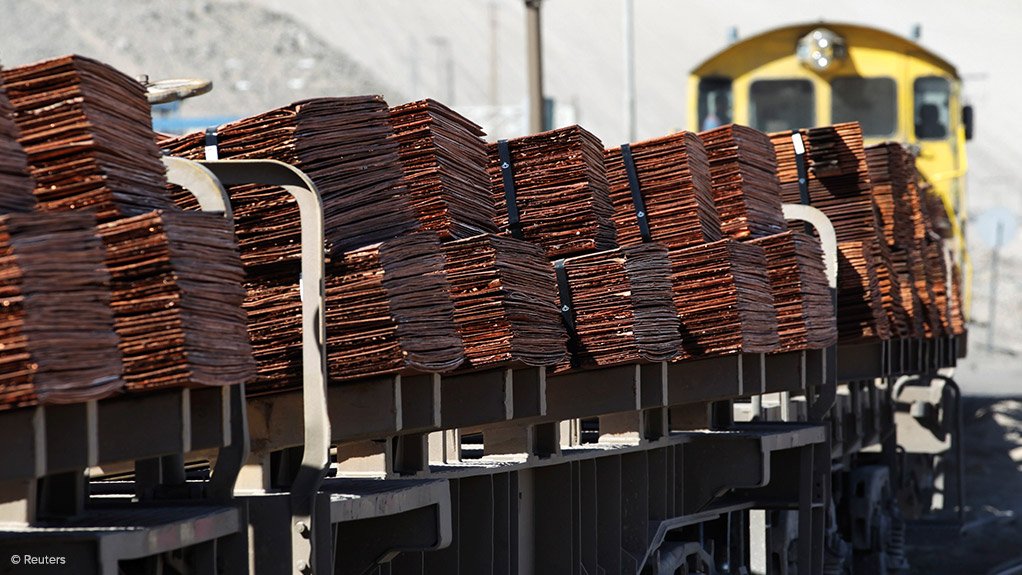Aus could miss critical minerals opportunities - BHP
PERTH (miningweekly.com) – Mining major BHP has warned that Australia could miss its opportunity to capitalise on the global demand for critical minerals if it is unable to compete for global investment capital.
Speaking at the American Chamber of Commerce in Australia, BHP Australia president Geraldine Slattery said that while Australia has considerable critical mineral resources, the country would need to be more competitive with other mineral-rich regions.
“To maintain Australia’s economic resilience, we will need to step up again and outcompete other nations. And to achieve that, we will need the same three factors that got us to this point to take us forward, that is: the rocks, the skills, and stability for investment.
But, this time around, we need to think about them differently,” she said.
Slattery pointed out that Australia’s critical mineral resources, while abundant, were deeper, more remote and individually smaller than the iron-ore and metallurgical coal endowment which resulted in Australia’s initial mining booms. This made accessing these deposits more complex and more expensive to mine.
“Australia has significant copper resources, and the potential to be a significant copper player. The South Australia copper province is a case in point - with high-grade deposits, but they are deep beneath the surface and require underground mining methods – this has the effect of smaller-scale mines.
“In Chile, one of Australia’s key competitors, copper endowments are larger in scale, closer to the surface, allowing for openpit mining methods. This translates to a higher cost-per-tonne to develop and operate copper mines in Australia, despite our high-grade endowment,” Slattery said.
Nickel faced a similar issue, with Indonesia offering stiff competition with its large nickel reserves which are more accessible and could be extracted through openpit mining method, and that government’s aggressive investment in technologies to produce nickel at scale.
“Yes, Australia has many large, high-quality resource endowments. But we cannot afford to assume that we will have the same degree of comparative advantage in critical minerals as we have enjoyed in iron-ore and metallurgical coal,” Slattery said.
Meanwhile, the high cost of labour, at a time when the skills pool was significantly shrinking, would also be a barrier to investment, Slattery said.
“Coupled with a shrinking talent pool, the cost of labour continues to rise in Australia. Australia has one of the highest labour costs in the world, around 12% higher than in the US.
“We are proud to be a high-paying industry, especially when you consider that many of the employment and business opportunities our sector generates are in regional areas. However, we need to match that position with sector-leading productivity. That’s not happening today, in fact labour productivity has declined by 8% while labour costs have doubled.
“Clearly, this is not sustainable. Changes to industrial relations policies are of particular concern, and like many businesses we believe they will have a negative impact on Australia’s competitiveness and jobs.
“To be more competitive, we must be more productive. This means investing in people, skills and technology. Without that, we cannot hope to unlock productivity or national competitiveness,” Slattery said.
Furthermore, Slattery has also urged the Australian government to further commit to encouraging investment in the resources sector, noting that the country’s relative tax competitiveness had declined since 2015, with company income tax now the third-highest in the OECD.
“Stability and competitiveness in fiscal and policy settings will be incredibly important to Australia’s ability to secure new multibillion-dollar, multi-decade investments. To give perspective, an estimated $100-billion of additional capital investment each year will be needed in the resources sector to meet the world’s decarbonisation ambitions. That’s quite the prize. But winning this race won’t be easy.
“The field is crowded because the benefits are so compelling. Other nations are aggressively moving to secure supplies and investment, as shown by the ambition and sheer scale of the US Inflation Reduction Act. Canada is using initiatives like its $4-billion Critical Mineral Strategy to secure its position.
“Indonesia continues to boost nickel production and attract downstream processing, and the European Commission’s Green Deal Industrial Plan is designed to increase their competitiveness.”
Slattery said that while the Australian government’s Critical Minerals Strategy was a welcome initiative, the country would need to do more in order to be globally competitive.
“A Productivity Commission report found that Australia’s regulatory processes are unduly complex, duplicative, lengthy and uncertain.
“Between 2014 and 2020, the average time for the assessment and approval of resource projects under the Environmental Protection and Biodiversity Conservation Act increased from 716 days to 940 days. That’s two-and-a-half years before we’re even able to look at the rocks.
“Canada is harmonising their approvals processes. Australia should follow suit. Australia can’t compete on subsidies with large economies like the US. But we can make sure that our policy settings are attractive to new investment.
“Industry and government have a shared responsibility to work together to create the conditions needed to bring more capital into Australia to fund our nascent critical minerals sector,” Slattery said.
Article Enquiry
Email Article
Save Article
Feedback
To advertise email advertising@creamermedia.co.za or click here
Press Office
Announcements
What's On
Subscribe to improve your user experience...
Option 1 (equivalent of R125 a month):
Receive a weekly copy of Creamer Media's Engineering News & Mining Weekly magazine
(print copy for those in South Africa and e-magazine for those outside of South Africa)
Receive daily email newsletters
Access to full search results
Access archive of magazine back copies
Access to Projects in Progress
Access to ONE Research Report of your choice in PDF format
Option 2 (equivalent of R375 a month):
All benefits from Option 1
PLUS
Access to Creamer Media's Research Channel Africa for ALL Research Reports, in PDF format, on various industrial and mining sectors
including Electricity; Water; Energy Transition; Hydrogen; Roads, Rail and Ports; Coal; Gold; Platinum; Battery Metals; etc.
Already a subscriber?
Forgotten your password?
Receive weekly copy of Creamer Media's Engineering News & Mining Weekly magazine (print copy for those in South Africa and e-magazine for those outside of South Africa)
➕
Recieve daily email newsletters
➕
Access to full search results
➕
Access archive of magazine back copies
➕
Access to Projects in Progress
➕
Access to ONE Research Report of your choice in PDF format
RESEARCH CHANNEL AFRICA
R4500 (equivalent of R375 a month)
SUBSCRIBEAll benefits from Option 1
➕
Access to Creamer Media's Research Channel Africa for ALL Research Reports on various industrial and mining sectors, in PDF format, including on:
Electricity
➕
Water
➕
Energy Transition
➕
Hydrogen
➕
Roads, Rail and Ports
➕
Coal
➕
Gold
➕
Platinum
➕
Battery Metals
➕
etc.
Receive all benefits from Option 1 or Option 2 delivered to numerous people at your company
➕
Multiple User names and Passwords for simultaneous log-ins
➕
Intranet integration access to all in your organisation

















